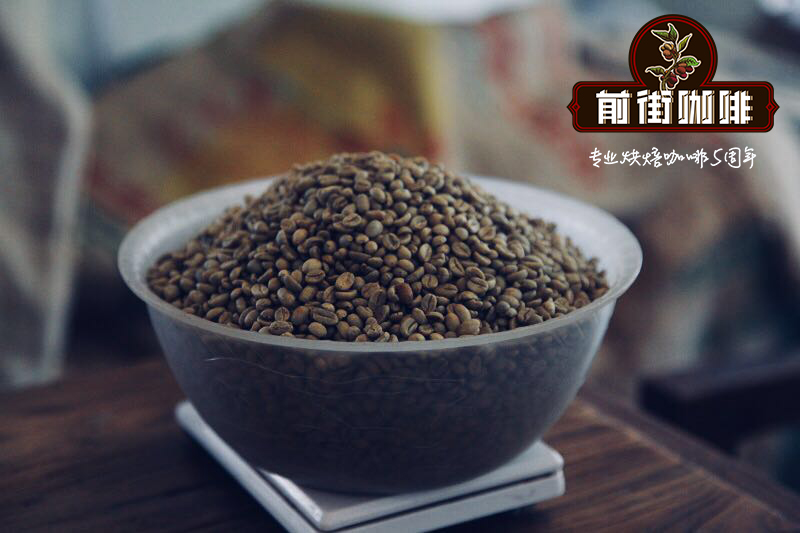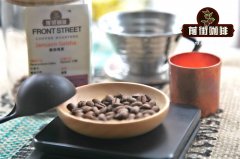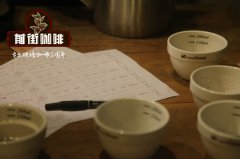What is the use of the Colombian microbatch program? Introduction of Coffee producing areas in Colombia

Professional coffee knowledge exchange more coffee bean information please follow the coffee workshop (Wechat official account cafe_style)
Colombia Micro-batch small Farmer Program, which offers coffee farmers from several of Colombia's best producing areas, including Huila, Narino, Cauca, Tolima, etc., unlike many coffee farmers who grow Castillo varieties, small farmers plan to grow a wide range of traditional varieties such as Bourbon, Typica, Caturra, Catuai and so on. Since the average planting area of these small farmers is only a few hectares, the quantity that can be provided by each batch each year is only about 3000MW 4000 kg, and the average elevation of each smallholder is about 1500Mel 1800m.
Na Linglong
The Columbia Linglong region is located in the Andes (the Andes, which begins in Chile and Argentina in the south, spans the north and south of Colombia and runs through the Nalinglong producing area) where Colombia meets Ecuador in the southeast. The natural geographical environment here: the tropical Pacific coast, the Amazon basin and the high Andes mountains divide the Nalinglong producing area into three major topography, the first is the plain along the Pacific coast, the second is the Amazon basin, and then the Andes mountains. Nalinglong coffee producing area is produced by 37 cities in Nalinglong province. The Nalinglong producing area is near the equator at latitude 0 ℃. It receives almost the same number of sunshine hours every day throughout the year, with an average sunshine time of 1666 hours per year. At the same time, the location and geographical environment of the producing area, the average annual temperature suitable for coffee growth, the stable temperature change in the morning and evening, the annual rainfall, and the soil rich in organic matter make the coffee trees in Nalinglong producing area thrive at very high altitude. it has a significant effect on the flavor and aroma of coffee.
Dorima
Located in the southwest of Colombia, Huila to the east and Valle del Cauca to the west, Tolima is the heart of Colombian boutique coffee, halfway between the eastern and central mountains of Cordilleras and run through the Magdalena River. Here there are great water quality, climate, altitude, as well as professional and advanced coffee planting and treatment technology.
Vera.
The Vera producing area, located in southwestern Colombia, is one of the well-known Colombian boutique coffee producing areas on the canyon slope formed by the western coastal mountains and the eastern mountains. it is also the southernmost area of the boutique coffee growing area with higher latitudines. compared with other regions, Vera producing area has rain all the year round and the climate and temperature are suitable. Such planting conditions provide the region with high-quality coffee beans that can even be planted to more than two thousand meters. Vilado is mainly small farmers, and the coffee is washed.
Test card
Cauca province is one of the well-known boutique coffee producing areas in Colombia, bordering Nalinglong in the west and Vera province in the east. The 29 administrative districts where coffee is grown range from 1758 meters to 2100 Michael above sea level. Like the boutique coffee producing areas in southern Colombia, the climate, rainy season, volcanic soil and other factors have a high degree of homogeneity. A fixed rainfall cycle (the dry season from August to September is followed by a rich rainy season, Rain Water) provides favorable results for coffee trees. High-intensity sunshine and low rainfall coincide with the flowering season (July-August), when it also leaves the equatorial windless zone, providing favorable flowering conditions for coffee trees. These factors also contributed to the concentrated harvest in the first quarter of the next year. Compared with other coffee-growing areas in Colombia, the climate is more variable in the daytime temperature: the average daily temperature is as low as 11 degrees, and the average temperature during the day is 18 degrees (the average temperature at night is 4 degrees). This sharp temperature difference between day and night is a boost to the growth of Coca Coffee. The low night average temperature caused by high altitude slows down the ripening of coffee beans, improves the acidity and gives special sweetness.
Sotara is a small town in the middle of Cauca, while the Sotara volcano belongs to the Andes, providing nutritious soil for coffee beans to grow. Coffee cultivation in this area covers an area of about 911 hectares and consists of mountainous areas and three well-known rivers: Caueta, Cauca and Magdalena.
Columbia beans have the highest selection (SUPERMO), followed by the upper selection (EXCELSO), but I'm afraid it takes more than 18 beans (18x64 inches in diameter) to be included in the selection. Colombian coffee has a balanced flavor and a smooth taste, just like a gentleman in coffee. He has a wide range of producing areas, but the coffee in the Central Mountain area is the best and has a thick texture. The most famous producing areas are medellin, armenia and manizales, which are commonly referred to as "mam".
END
Important Notice :
前街咖啡 FrontStreet Coffee has moved to new addredd:
FrontStreet Coffee Address: 315,Donghua East Road,GuangZhou
Tel:020 38364473
- Prev

What's the flavor of Blue Mountain Coffee? how does Blue Mountain Coffee taste good in a siphon pot?
Professional coffee knowledge exchange more coffee bean information please follow the coffee workshop (Wechat official account cafe_style) have you ever had Blue Mountain Coffee? As you may know, Blue Mountain is located in the east of Jamaica. The highest mountain in the Western Caribbean, despite its unique climate and soil conditions, is not really Blue Mountain coffee. Only grow in
- Next

How to drink the organic old bourbon coffee in Turtle Island, Ecuador? Introduction to the method of Coffee processing in Ecuador
Professional Coffee knowledge Exchange more information on coffee beans Please follow Coffee Workshop (Wechat official account cafe_style) Ecuador is bordered by the Pacific Ocean in the west, the eastern area near the coast is plain topography, and the central elevation is high, of which Mount Chimborazo (6310 m above sea level) is part of the Andes and is an extinct volcano. Except that it is the highest point in the country (sea
Related
- Detailed explanation of Jadeite planting Land in Panamanian Jadeite Manor introduction to the grading system of Jadeite competitive bidding, Red bid, Green bid and Rose Summer
- Story of Coffee planting in Brenka region of Costa Rica Stonehenge Manor anaerobic heavy honey treatment of flavor mouth
- What's on the barrel of Blue Mountain Coffee beans?
- Can American coffee also pull flowers? How to use hot American style to pull out a good-looking pattern?
- Can you make a cold extract with coffee beans? What is the right proportion for cold-extracted coffee formula?
- Indonesian PWN Gold Mandrine Coffee Origin Features Flavor How to Chong? Mandolin coffee is American.
- A brief introduction to the flavor characteristics of Brazilian yellow bourbon coffee beans
- What is the effect of different water quality on the flavor of cold-extracted coffee? What kind of water is best for brewing coffee?
- Why do you think of Rose Summer whenever you mention Panamanian coffee?
- Introduction to the characteristics of authentic blue mountain coffee bean producing areas? What is the CIB Coffee Authority in Jamaica?

